Pat Musick’s childhood and now adult home sits directly on the boundary of Garden of the Gods, with the red rocks used as walls and offering a beautiful view of the park and Pikes Peak. Musick’s father, the painter Archie Musick, designed and built the home back in the 1950s with a goal of incorporating nature into every aspect of the architecture. (Video by Skyler Ballard)
Welcome to Pat Musick’s childhood home, where the outdoors is indoors, art covers the walls and wildlife parades by its windows all day long.
This is the magical earthship her father built in the late ’40s and ’50s, before such things even had a name. Her father being Archie Musick, the famed Colorado Springs painter and teacher known for his signature egg tempera and colored pencils painting technique, and the murals he left that still live on at the Manitou Springs Post Office, Colorado Springs City Auditorium and Canyon Elementary School.
Step right up to the elaborately carved front door, a project Archie tackled one summer while taking a wood-carving workshop at the FAC school from Mary Chenoweth, one of the Pikes Peak region’s most prolific artists in her day. Once inside, a short flight of stairs carries you up into the living room with its linoleum-covered concrete floor and the home’s most memorable landmark — a giant boulder that bulges into the house and accompanying slab of rock that makes up the east wall.
The home won an award for originality in 1959 from McCall’s, a monthly women’s magazine.
“It makes me miss it tremendously when I’m somewhere else,” says Pat, who has returned to live in the 1,100- square-foot home. “I’ve lived in London and appreciated the multicultural offerings, but I missed the wide-open spaces and the rocks and sky. It makes me feel contact with the natural world is essential.”
A short flight of stairs delivers you up into the light-filled kitchen where three walls of windows offer postcard views of Pikes Peak, Cheyenne Mountain and Garden of the Gods. Care for an evening stroll through the iconic park with its soaring sandstone formations? Exit the kitchen onto the roof. A few steps later you’re on terra firma, part of the beauty of living in the house as a child.
“I was aware that not everyone got to go right out the door and sit on a cactus or skin their knees climbing on rocks,” Pat says. “My friends who came over to play didn’t remark on the architecture, but we were running up and down the stairs and out on the rocks and all the fun things, which they didn’t have.”
If you’re very lucky, you’ll be invited into the two back bedrooms and bathroom, where Archie the muralist left his mark. King Neptune and his trident lord above the angry seas high on a bathroom wall, while a children’s literature mural stretches across what used to be Pat and her brother’s room when they were tiny. It replicates the more extensive mural he painted in Canyon Elementary School in 1954. A second mural rich with horses and bison dances across the wall of a second bedroom. You’ll recognize the imagery if you’ve visited the bottom-floor restroom of the FAC, where Archie painted a similar mural.
He studied under nationally renowned painter, lithographer and illustrator Boardman Robinson at the Broadmoor Art Academy in the 1920s and ‘30s before it became Colorado Springs Fine Arts Center at Colorado College; painter and muralist Thomas Benton Hart in New York City; and painter Stanton Macdonald-Wright in Los Angeles.
“It’s (the house) a work of Archie’s art in some respects, and not just a typical home,” says The Art Bank & Oriental Rug Center co-owner Blake Wilson.
“It’s reflective of his paintings in the way he saw the landscape. Most Benton students mimicked Benton in their styles. It was refreshing to see Archie being different and true to his own feelings. His prints are very moody, from whimsical to moody and spiritual.”
This was where little kindergartener Pat sat at the kitchen table taking art lessons from her mom, Irene Musick, an award-winning ceramics artist. She was head of the ceramics department at the University of Missouri in Columbia when she met Archie, who taught art at the school. In the mid-to-late ’60s, she taught at The Colorado Springs School for Girls, now The Colorado Springs School. Her pottery decorates the living room shelves. An old mixing bowl she made in graduate school rests in a kitchen cupboard.
“I remember sitting one winter day and she said let’s draw the Christmas decorations downtown,” Pat says. “She did beautiful drawings and was showing me how to make things look smaller in the distance. At kindergarten age she was teaching me one- point perspective.”
To absolutely no one’s surprise, young Pat grew into an accomplished artist. She works primarily in enameling and calligraphy/letterforms, but also, just like her father, has produced three public murals in Colorado. And much like him, she turns to the natural world and culture for inspiration: “It does something to you growing up with a rock in your living room,” she says.
The Missouri-born Archie landed in the Springs in a spectacular fashion. The law was hot on his and a buddy’s trail in Pueblo — they’d been hopping on freight trains and railroad authorities were not pleased — when they made a quick turn into a drugstore and saw a rack of postcards with scenes from Garden of the Gods. He remembered seeing the images as a 6-year-old sitting on his mother’s lap and peering into an old stereoscope. So the men hopped a freight train and traveled north, where Archie first became aware of the academy and resolved to return to study. In 1927, he made good on that promise.
His first Springs digs was a modified chicken shack within walking distance of the outskirts of Garden of the Gods. When a friend pointed out a natural amphitheater in the nearby sandstone rocks, he was sold.
“’Something should be done about this,’ I said to the rocks,” wrote Archie in an unpublished memoir. “It’s too damn good to pass through the ages unnoticed. What a view. What two views. The inspiration hit me like a pile driver. This was the place. For 11 years I had lived within 150 feet of the grandest building site in the west, and had never tumbled.”
After returning from a civil service stint during WWII, Archie and Irene spent their summer vacations working on the home. The project was greatly influenced by famous architect Frank Lloyd Wright, who believed in incorporating the landscape into the architecture. That philosophy was reflected in Archie’s set of three rules for the home: Keep it simple, don’t offend the landscape and make it as close to living out of doors as possible.
The ingredients: cinder block, concrete, wood, oak, possibly repurposed railroad ties, plywood steel beams, granite rocks, stucco and a noteworthy contribution — lichen-covered river rocks delivered by famed muralist Eric Bransby and his wife, the watercolor artist Mary Ann Bransby, from their property south of town on Colorado 115.
The Musicks permanently moved to the Springs in 1951 and finished the house in 1954. Archie found work teaching art in the Cheyenne Mountain School District, while taking classes at the FAC school.
He also wrote a column about art and artists for The Gazette Telegraph, telling stories about his cronies and the American Regionalism art movement — modern art that depicted realistic scenes of rural and small-town America, mostly in the Midwest. His memoir, “Musick Medley: Intimate Memories of a Rocky Mountain Art Colony,” is a must for those interested in the genre, says Wilson.
“Archie will be known as a storyteller, literally and figuratively,” he says. “He depicts the Western landscape as a mysterious and spiritual world. He’ll honor those who were here before us. His home is a part of the landscape and the people who were here before him are a part of that landscape.”
Upkeep of the house fell to the wayside after Archie died in 1978. Pat returned and shored up the house — electrical rewiring, replumbing, reinsulation and the like. The home was, and can still be, a challenge.
“This was in the county at the time, and not part of the city,” she says. “Whatever building codes there might have been might have applied in the city, but they didn’t apply here.”
Nowadays Pat creates her art in two back studios, where her parents once toiled over their creations. And while she works, it’s highly possible a deer with an antler mistakenly growing out of the center of his forehead will stroll by, peer in and keep trucking. She appreciates the unusual treasure she’s been gifted.
“There’s a sentimental value in living in and restoring a house built by my parents’ own hands.”
Contact the writer: 636-0270


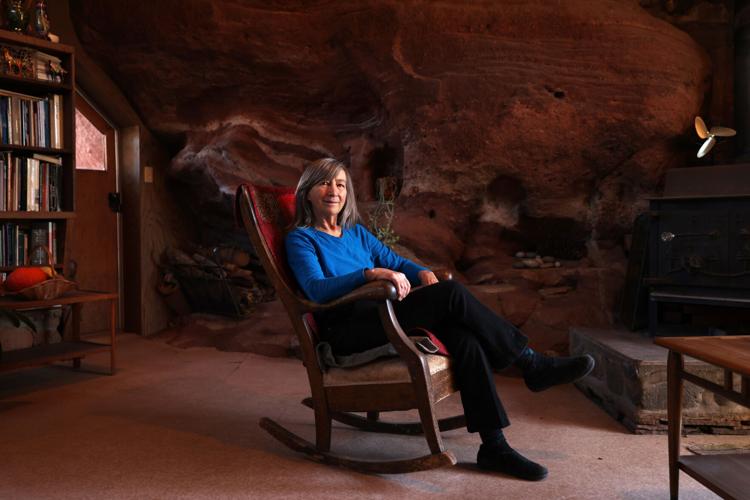
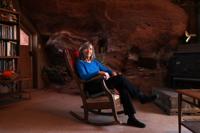
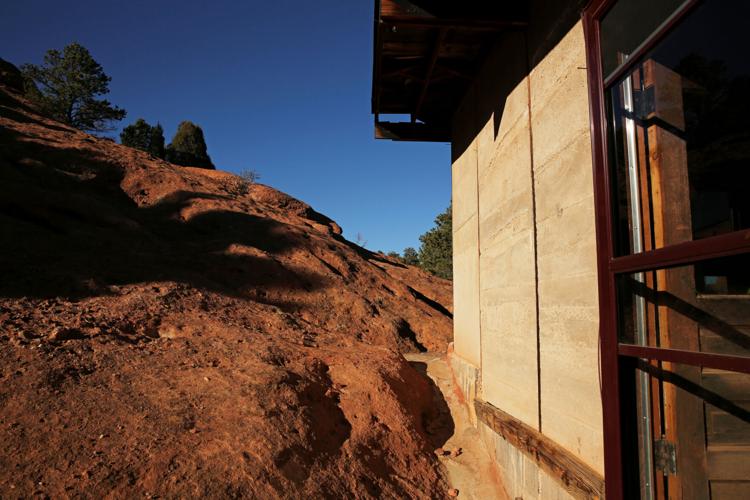






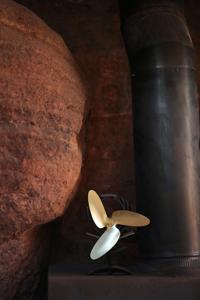

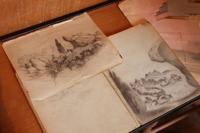

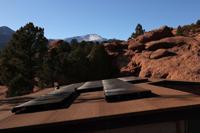

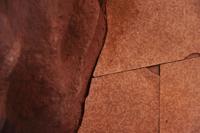

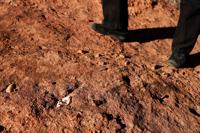

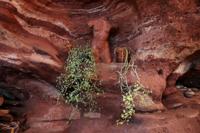

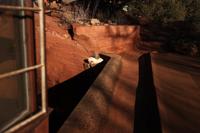

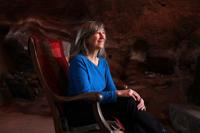

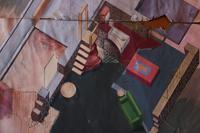

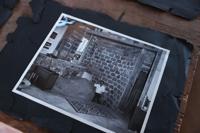

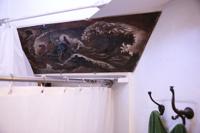



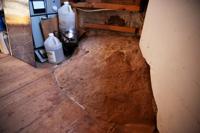

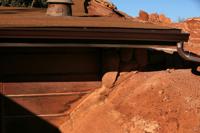

















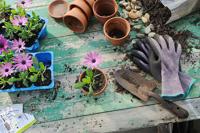








 Your Privacy Choices
Your Privacy Choices